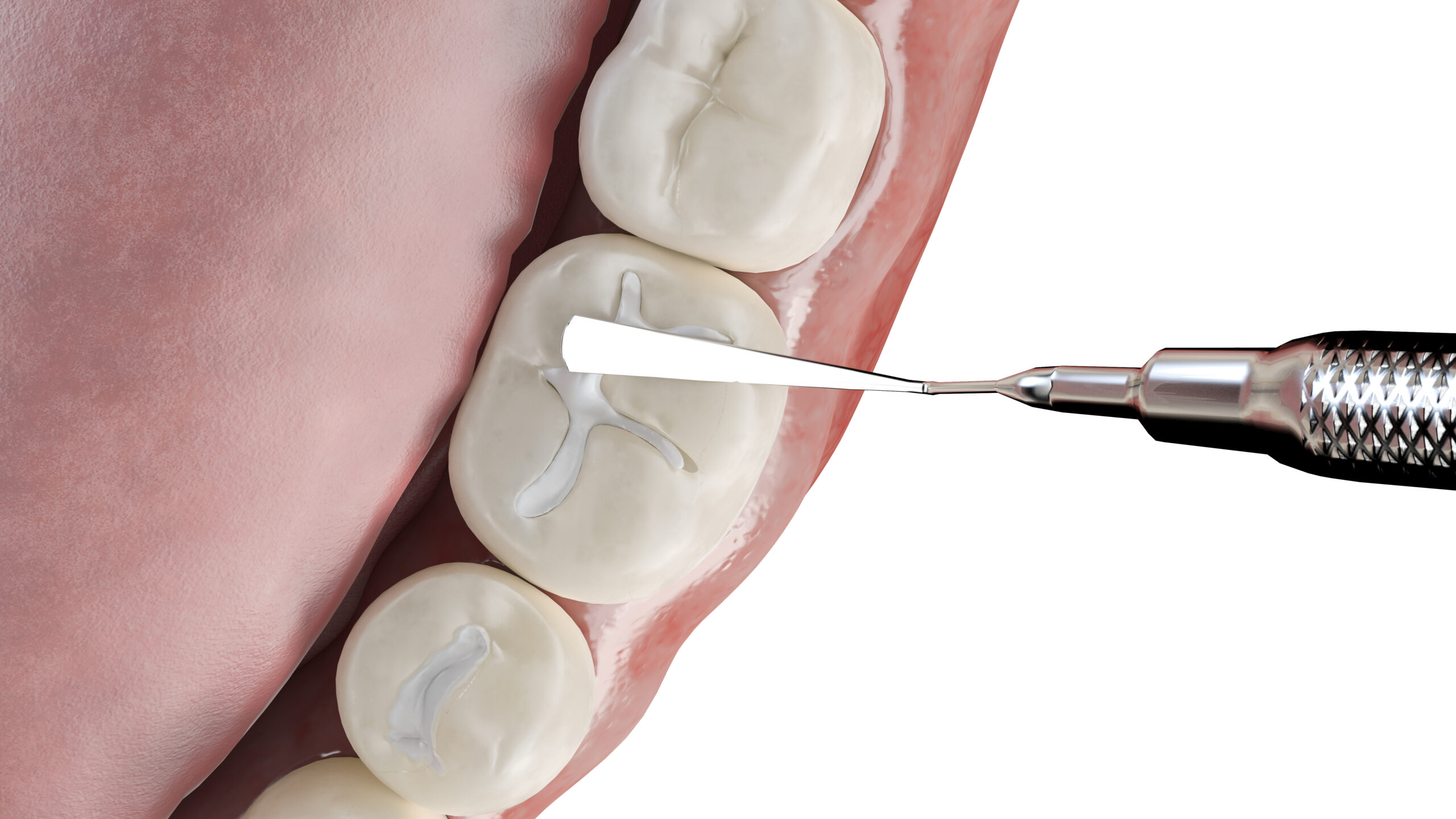Dental fillings are one of those discoveries in dentistry that have helped restore millions of teeth so far. There are different types of dental fillings. Each filling has varying features and properties.
We’ll go through all the types of dental fillings to help you choose the best one for yourself.

A dental filling is a material (e.g., ceramic, composite, etc.) used to restore damaged, decayed, cracked, or carious teeth. If a carious tooth is not restored, it will damage the tooth to its core, disturbing regular oral functions. Therefore, dental fillings play a vital role in restorative dentistry.
Patients often ask, “What do they use to fill cavities?” To answer this question, five different types of dental fillings are used: amalgam, composite, gold, ceramic or porcelain, and glass ionomer cement (GIC).
Let’s understand all types of dental fillings and their features.
Composite fillings are the most aesthetic tooth-colored dental fillings. These fillings are strong and convenient for the dentist to apply. We can use composite to restore:
They consist of resins that can not bind with the tooth surface independently but require external agents to help in the process.
The procedure of composite dental fillings is simple and can be completed in a single appointment. It is essential to keep the tooth moisture-free and isolated. A rubber dam is used for this purpose. Rubber dams are made of latex. However, latex-free rubber dams are available for people with latex allergies.
After this is done, the damaged part of the tooth is removed, and the remaining cavity-free portion is cleaned. An etchant is applied to the tooth for about 20 seconds and washed. Next, the dentist will apply the bonding agent. This develops a strong link between the filling material and the tooth. Lastly, the composite is applied, shaped, and then fixed with the help of UV light. The final step involves polishing the filling.
Composite fillings cost between $150 and $400 for one or two surfaces and between $350 and $400 for three or more surfaces. The price also depends on the remaining healthy tooth structure.
Amalgam fillings are among the oldest dental fillings, known for their strength, tarnish resistance, and longevity. Their main component is mercury. In recent years, research on mercury toxicity has degraded the use of amalgam fillings.
Mercury is known to cause insomnia, which is sleeplessness. It can irritate the eyes and also initiate gut and skin issues. In addition, mercury toxicity can also induce severe headaches. Therefore, keeping in view the side effects of mercury, amalgam fillings are generally discouraged throughout the world.
The procedure of amalgam fillings is comparatively more complex than composite fillings. Amalgam requires special instruments for its placement. The size of the cavity after caries is removed should be made big enough to accommodate the instrument used to manipulate amalgam. Once it is placed within the cavity, it is polished.
In the case of amalgam, its bonding with the natural tooth depends on how well the dentist compresses or condenses and sets it within the tooth.
The price ranges between $50 to $400. The price of tooth filling is less for one or two damaged tooth surfaces while more for 3 or more.
Ceramic fillings are also called porcelain fillings. These fillings are known for their strength and ability to resist greater load. They are suitable for restoring larger parts of damaged teeth, specifically posterior teeth.
Ceramic fillings can be completed in two to three appointments. After the caries are removed, the healthy tooth structure is cleaned, and an impression is taken. Before the second appointment, the porcelain or ceramic filling is prepared from the lab using the impression. It is bonded to the healthy tooth structure if it fits well. If it doesn’t fit well, it is modified and tried at the next appointment.
Porcelain or ceramic filling is about $250 to $1600, depending upon the extent of caries or decay.
Gold fillings are similar to ceramic fillings but they are much more expensive. Gold fillings not just contain gold but also other metals like palladium, copper, etc. The procedure of gold fillings is similar to ceramic. People prefer gold fillings in the posterior teeth to the anterior. These were pretty famous in the past but nowadays people prefer composite due to their aesthetic properties.
The cost of gold restorations varies between $300 to $1800. Smaller fillings are less expensive than larger ones.
Glass Ionomer Cement dental fillings give a pleasing and aesthetic look. It is composed of glass and acrylic. GIC is not sustainable for large cavities but is good for small-sized cavities. It is one of the first options to be used before the permanent fillings, such as after root canal treatment.
Then these temporary fillings are later replaced by other materials like amalgam, porcelain, or composite. These materials are permanent. GIC fillings can not last for more than 4-5 years. In primary teeth, GIC is preferred.
The procedure of GIC filling is the simplest among all the types of dental fillings. After the caries removal, the cavity is cleaned and shaped then an appropriate amount of GIC filling material is placed according to the shape of the cavity.
GIC fillings are cheap, costing between $150 and $300. They are not very sustainable but show good results in pediatric patients.

There are different types of dental fillings; every type has pros and cons. Amalgam filling is not commonly used anymore. However, composite filling is on the rise nowadays. Gold filling and GIC have their uses.
Are you in search of dental fillings experts in NJ? Then book your consultation at Hesed Dental today, a group of expert dentists in NJ. Irrespective of the material you choose, your satisfaction is our priority.

Hesed Dental 543 Gorge Road Cliffside Park, NJ 07010
201 941 8877